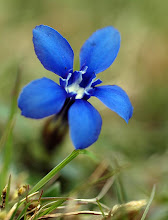There was a time – before the advent of synthetic fibres
based on plastics and petrochemicals - when the wealth and security of nations depended on tough, coarse plant fibres that provided rigging for sailing ships
and the raw material for countless other essential objects - like sacks and sails for example - so
explorers were always on the look-out for new supplies of this strategic
material.
Joseph Banks,
travelling on Captain Cook’s first voyage to the South Seas in 1769, had high
hopes that he might make a fortune from growing New Zealand flax Phormium tenax
that he found in those Antipodean islands, as a substitute for cannabis fibre which, up until then, had provided most of the fibre for rigging naval vessels. Maoris
made their traditional textiles from the Phormium fibres but Banks envisaged a thriving industrial market for the product, whose fibres are much stronger than those of cannabis, and an attempt was made to use convicts to grow the plant as a fibre crop on Norfolk Island. Banks was destined to be disappointed - you can read an account here - but it did become an important source of fibre for rigging in the 19th. century..
The image above shows a transverse section of a New Zealand flax leaf, using the fluorescent dye auramine O to stain the lignified fibres, which show up as the transverse yellow-green bands in the image. I've turned the natural orientation of the leaf 90 degrees clockwise, to fit the page.
The thick-walled fibres have a tiny central cavity (the lumen), which is typical of sclerenchymatous fibres.
The transverse red bands are photosynthetic parenchymatous cells - chlorophyll fluoresces red in the blue light that was used to illuminate the specimen.
The bright blue cells are bundles of thin-walled phloem, which has no lignin in its walls, and the brighter yellow cells surrounding the phloem will be lignified xylem, conducting water.
The lower surface of the leaf, to the left of the image, has a lignified hypodermis, below the epidermis.
The natural function of the fibres and lignified hypodermis is to provide structural rigidity for the long, narrow, sword-shaped leaves, which are held upright in the living plant, which is illustrated below (public domain image from Wikipedia Commons http://upload.wikimedia.org/wikipedia/commons/a/a5/NZflaxPiha02.jpg
Today Phormium tenax is mostly grown as a decorative garden plant.















